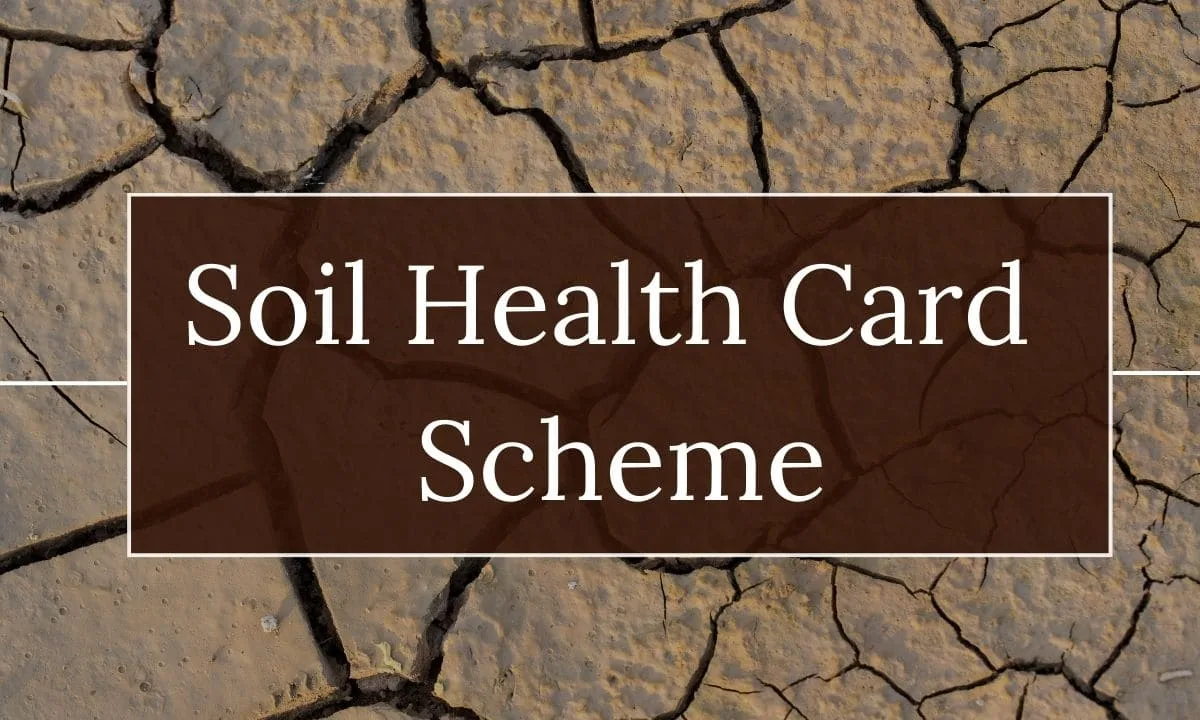Understanding the health of soil is paramount for Indian farmers as it directly influences agricultural productivity and sustainability. In a country where agriculture is a primary livelihood, soil health knowledge empowers farmers to make informed decisions about nutrient management, fostering optimal crop growth. With the majority of farmers relying on traditional practices, access to Soil Health Cards provides a transformative tool for modern, science-backed agriculture. In this article, we are going to learn about the scheme in Detail. We are also going to talk about the New Soil Health Card Scheme that was announced in August 2023.
What is a Soil Health Card Scheme?
Knowledge of soil conditions helps mitigate nutrient deficiencies, promotes efficient water usage, and supports the adoption of sustainable farming practices, contributing significantly to food security and the economic well-being of farmers across the nation.
The Soil Health Card Scheme entails providing farmers with a Soil Health Card, enabling them to make informed decisions about which crops would be beneficial for their soil.
A Soil Health Card is nothing but a printed document provided to farmers in India, offering comprehensive information about the health and nutrient status of their soil. The initiative aims to support State Governments in the nationwide distribution of soil health cards to all farmers. These cards furnish farmers with essential details about the nutrient levels in their soil, coupled with recommendations for the optimal application of nutrients to enhance soil health and fertility.

The card typically includes details on 12 key parameters, encompassing macro-nutrients like Nitrogen (N), Phosphorus (P), and Potassium (K), secondary nutrients such as Sulphur (S), and micro-nutrients like Zinc (Zn), Iron (Fe), Copper (Cu), Manganese (Mn), and Boron (Bo). Additionally, physical parameters like pH, electrical conductivity (EC), and organic carbon (OC) are assessed.
Based on these findings, the Soil Health Card provides farmers with specific recommendations regarding the application of fertilizers and soil amendments to enhance soil fertility and optimize crop yields. The initiative aims to promote sustainable agricultural practices and improve overall farm productivity in India.
Note: In 2015, coinciding with the International Year of Soils, India introduced a distinctive program—the soil health card initiative. This initiative was designed to evaluate the nutrient status of each farm in the country.
| Soil Health Card Scheme 2023 Key Highlights | |
| Soil Health Card Scheme Launch Date | February 19, 2015 |
| Soil Health Card Scheme Official Website | SHC Official Website |
| Soil Health Card Scheme Objective | To distribute soil health cards to farmers, with the goal of establishing a foundation for addressing nutritional deficiencies in fertilizer practices. |
| Soil Health Card Scheme under which the Ministry | Ministry of Agriculture and Farmers Welfare |
| Soil Health Card Scheme Beneficiaries | Farmers of India |
| Soil Health Card Scheme Tagline | Swasth Dhara, Khet Hara |
| Soil Health Card Scheme Per Sample Cost | Rs. 190 per soil sample |
| Soil Health Card Scheme No. of Key Parameters Tested | 12 Parameters |
| Soil Health Card Scheme Helpline Number | 18001034112 |
Soil Health Card Objective
- Implementing a biennial issuance of soil health cards to all farmers, serving as a foundation for addressing deficiencies in fertilizer practices related to nutrient levels.
- Enhancing the functionality of Soil Testing Laboratories (STLs) through capacity building, engagement of agricultural students, and establishing effective connections with the Indian Council of Agricultural Research (ICAR) and State Agricultural Universities (SAUs).
- Utilizing standardized procedures for soil sampling, analysis, and designing fertilizer recommendations at the taluka/block level in targeted districts, with a focus on diagnosing soil fertility-related constraints.
- Encouraging and advancing soil test-based nutrient management in districts to improve nutrient use efficiency.
- Providing financial assistance to farmers for implementing corrective measures to address deficiencies and promoting balanced and integrated nutrient management practices for their cropping systems.
- Building the capacities of district and state-level staff, as well as progressive farmers, to advocate and implement effective nutrient management practices.
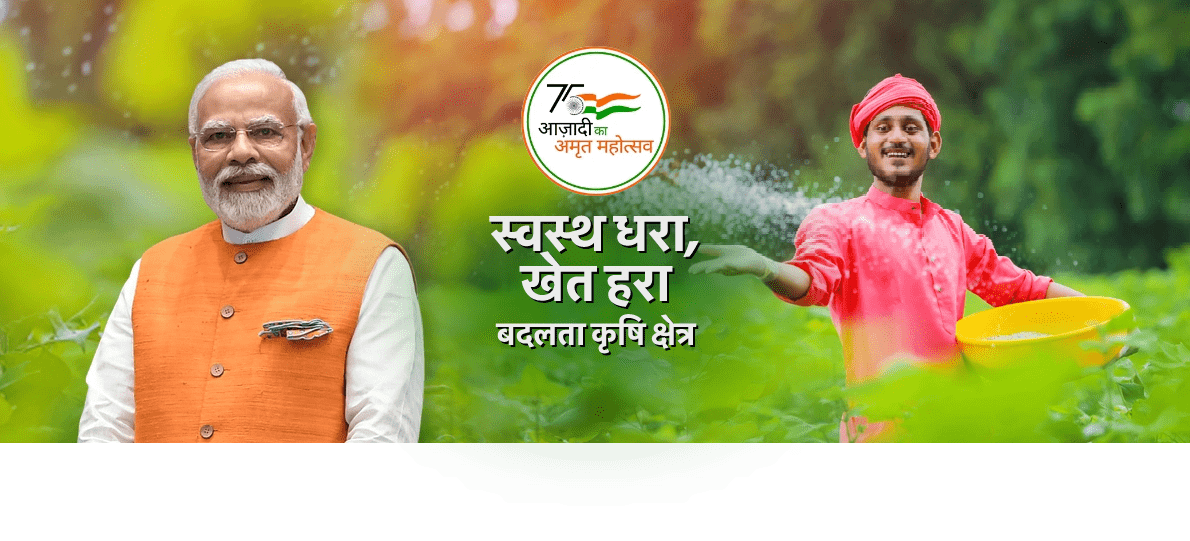
Soil Health Card in News | About New Soil Health Card Scheme
On August 11, 2023, the Government of India introduced technological enhancements to the New Soil Health Card Scheme, including a revamped portal integrated with a Geographic Information System (GIS). This integration allows all test results to be visualized on a map.
To streamline the scheme’s implementation and provide farmers easy access to their soil health cards, the mobile application has been strengthened with additional features. These features include restricting the sample collection region for Village Level Entrepreneurs/Operators, automatic selection of latitude and longitude, and the generation of a QR code linking to sample and test results directly on the portal from geo-mapped labs, eliminating manual intervention. The updated system has been in operation since April 2023, with samples collected through the mobile application, and Soil Health Cards generated on the revamped portal.
Additionally, the scheme has been incorporated into the Rashtriya Krishi Vikas Yojana (RKVY) cafeteria scheme under the name ‘Soil Health & Fertility’ from the year 2022-23. Guidelines for Village Level Soil Testing Labs (VLSTLs) have been issued, allowing individual entrepreneurs and community-based entities like Self Help Groups (SHGs) and Agriculture Universities to set up VLSTLs.
The eligibility of enrollment is determined by the District Level Executive Committee (DLEC). Entrepreneurs can submit applications along with necessary documents for enrollment, and training is provided by manufacturers and state governments.
VLSTLs, in turn, educate farmers on fertilizer and crop recommendations. Detailed Soil Mapping at a 1:10000 scale is undertaken using high-resolution satellite data and ground surveys in priority areas of the country by Soil & Land Use Survey of India, DAC&FW. This Soil Resource Information is in digital geospatial format, distinct from the data.
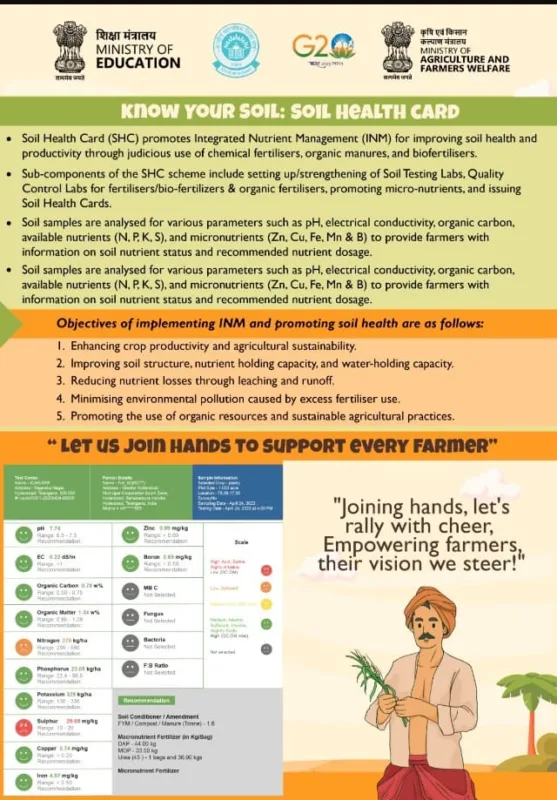
Soil Health Card Key Features
- Each of a farmer’s holdings will be provided with a Soil Health Card (SHC), presenting a printed report.
- The SHC will encompass information on 12 parameters, including macro-nutrients (N, P, K), a secondary nutrient (S), and micro-nutrients (Zn, Fe, Cu, Mn, Bo), as well as physical parameters such as pH, EC, and OC.
- Fertilizer recommendations and necessary soil amendments for the farm will be indicated based on the soil status outlined in the SHC.
- The card will offer advisory content aligned with the soil nutrient status of the farmer’s holding, providing recommendations on the required dosage of various nutrients.
- It will guide the farmer on the application of fertilizers, specifying quantities, and suggest soil amendments to achieve optimal yields.
- Soil samples will be collected from 2.5 hectares in irrigated areas and 10 hectares in rainfed areas.
Soil Health Card Scheme Implementation and Technology
- The National Informatics Center (NIC) has developed a web portal facilitating the generation of uniform soil health cards and fertilizer recommendations.
- Farmers can use the portal to track soil samples, print soil health cards, and locate soil testing laboratories.
Soil Health Card Scheme Testing of Soil Samples
Soil samples undergo analysis at a designated soil testing laboratory, a facility specializing in testing soil samples for 12 key nutrient parameters.
The soil testing facility may be mobile, static, or portable, particularly in remote areas where accessibility is a challenge.
Testing is conducted in accordance with approved standards for all 12 parameters through various channels:
- At soil testing laboratories owned by the Department of Agriculture, with analysis performed by their staff.
- At soil testing laboratories owned by the Department of Agriculture but operated by an outsourced agency.
- At soil testing laboratories owned by the outsourced agency, where their staff conducts the analysis.
- At Indian Council of Agricultural Research (ICAR) Institutions, including Krishi Vigyan Kendras (KVKs) and State Agricultural Universities (SAUs).
- At laboratories in science colleges or universities, students conduct the analysis under the supervision of a professor or scientist.
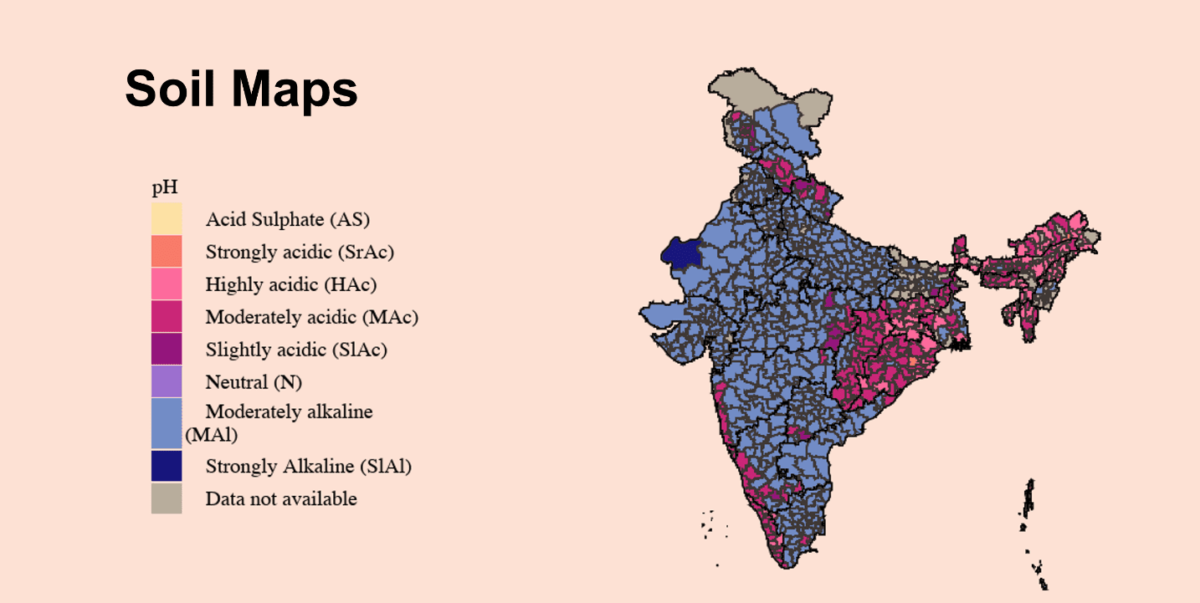
Soil Health Card Scheme Testing Location
The soil sample undergoes analysis at a soil testing laboratory, a facility dedicated to assessing 12 parameters of soil nutrients. These laboratories can take various forms, including mobile, static, or portable units, particularly in remote areas. The testing process adheres to approved standards for all 12 parameters and can occur through different avenues:
- Soil testing is conducted at laboratories owned by the Department of Agriculture, with the analysis performed by their staff.
- Soil testing is carried out at laboratories owned by the Department of Agriculture but managed by an outsourced agency.
- Soil testing occurs at laboratories owned by an outsourced agency, and the analysis is conducted by their staff.
- Analysis of soil samples takes place at Indian Council of Agricultural Research (ICAR) Institutions, Krishi Vigyan Kendras (KVKs), and State Agricultural Universities (SAUs).
- Laboratories in science colleges or universities are utilized for soil testing, with students conducting the analysis under the supervision of a professor or scientist.
Field Soil Sampling Process
A skilled individual will gather soil samples from a depth of 15-20 cm by extracting the soil in a “V” shape. Sampling will take place at the four corners and the center of the field, ensuring thorough mixing before selecting a representative portion as the final sample. Shaded areas will be excluded from the sampling process. The chosen sample will be carefully placed in a coded bag and subsequently transported to a soil test laboratory for detailed analysis.
Soil Health Card Portal – Workflow process
- Soil samples are collected from a grid of 2.5 hectares in irrigated areas and 10 hectares in rain-fed areas, using revenue maps and GPS tools.
- Collection is done by trained personnel employed by State Governments or outsourced agencies, sometimes involving students from local science or agriculture colleges.
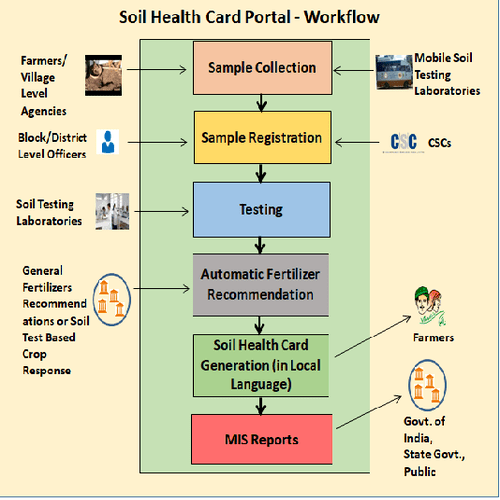
- Samples are gathered twice a year, typically after harvesting Rabi and Kharif crops or during fallow periods.
- Collected samples are coded, bagged, and sent to soil test laboratories for analysis.
- After that, Automatic Fertilizer Recommendation will be done and Soil Test Based Crop Response will be given.
- Soil Health Card will be generated where all the parameters score will be displayed.
- You can print the Soil Health Card through the official website.
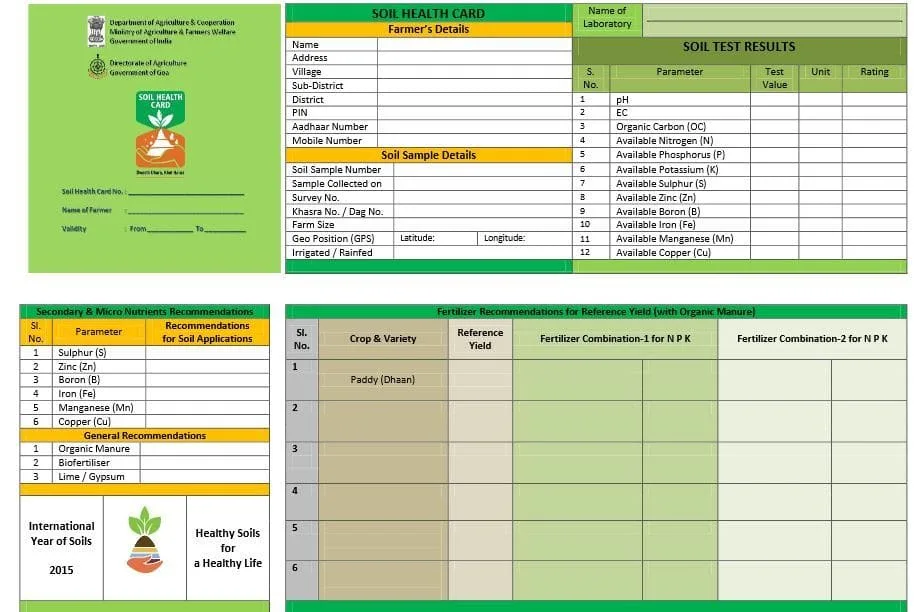
Download the Soil Health Card App (Google Play)
Important Links
Print soil health card for additional Crops
Locate soil testing laboratory
Know the Soil health status of your area
Guidelines for Demonstrations Under Soil Health Card (SHC) Scheme
| OTHER AGRICULTURAL SCHEME FOR FARMERS |
| PM FASAL BIMA YOJANA |
| PM KISAN SAMMAN NIDHI YOJANA |
